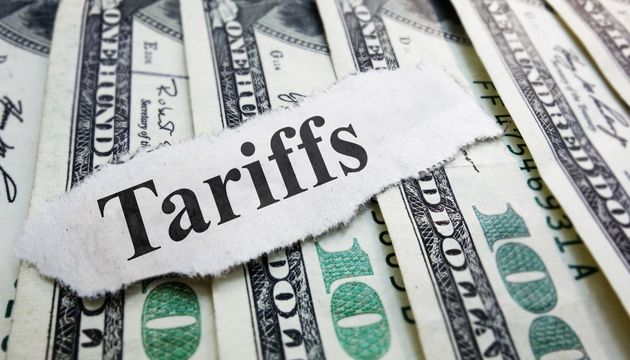
So, What’s Up With Tariffs in 2025? (And Why Your Business Should Care)
Let’s be honest—tariffs and trade policy don’t usually make for exciting dinner conversation. But in 2025? They matter more than ever. Whether you’re running a small shop that sells imported goods or managing supply chains at a mid-sized manufacturing company, these new U.S. trade rules are hitting everyone a little differently. If you’ve been nodding along in meetings, pretending you know what “Section 232” means, or just hoping this whole thing blows over, this post is for you. I’m breaking it all down in plain English so you can actually do something about it.
First: What Are Tariffs, and Why Are We Talking About Them?
A tariff is basically a tax the government puts on stuff that comes into the country. In 2025, the U.S. has been slapping some pretty big tariffs on products coming from places like China, Canada, and the EU.
Why? To try and bring more manufacturing back to the U.S. and reduce our trade deficit (that’s the difference between what we import versus export). It’s a political move, but it’s also an economic strategy—and, like most strategies, it’s complicated.
The U.S. Strategy in a Nutshell:
- Chinese products (EVs, semiconductors, green tech): 25 – 125 percent tariffs
- Steel & aluminum (from pretty much anywhere): 30 percent tariff
- Canada & EU (in response to digital-services taxes): 25 – 35 percent tariffs
These policies are supposed to protect American jobs and manufacturers, but they’re also raising costs for businesses that rely on international goods.
What Does This Mean for Global Partners?
China:
- Shipping more to Southeast Asia instead of the U.S.
- Making higher-end tech products to increase profit margins.
- Building factories in Mexico to get around the tariffs.
If your business buys parts or products from China, this is a big wake-up call. It’s time to rethink your supply chain and maybe consider partners in Mexico or ASEAN countries.
Also Read: Best business tools in 2025
Canada:
Yep—we’re even taxing Canada now: 25 percent on $155 billion worth of goods.
- 68 percent of small Canadian companies say this has raised costs by 10 – 15 percent.
- U.S. consumer prices for things like beer and motorcycles are up almost 5 percent.
- Canada rolled out a tariff-relief program to help businesses recover up to 80 percent of extra duties.
If you’re importing from Canada, make sure your supplier is applying for that relief—it can lower your costs too.

United Kingdom:
Some progress here:
- British cars now face a 10 percent tariff instead of 27.5 percent.
- Tariffs on UK steel have been removed.
- But most UK exports still face 10 percent tariffs, adding up to $4.7 billion in extra costs every month.
If you’re buying from the UK, focus on goods exempted from tariffs—like Scotch whisky and ceramics.
So… What Should You Be Doing?
This is where things get practical. Let’s talk strategy:
Check Your Supply Chain:
If you’re still using parts from tariff-heavy regions, see if you can switch to other sources—Mexico, Vietnam, Canada (with remission), or even the U.S.
Use Existing Trade Agreements:
- USMCA (the updated NAFTA) lets companies avoid tariffs if they meet certain rules.
- ASEAN Digital Economy Framework can open new low-tariff options in Southeast Asia.
Try Some “Tariff Engineering”:
Some companies tweak small product details (e.g., metal composition in a machine part) to qualify for lower-tariff categories. Nerdy? Sure. Effective? Very.
Use AI and Tech Tools:
Software like Descartes can help you vet suppliers, avoid penalties, and model different trade scenarios—one system even cut customs delays by 40 percent.
For Small Businesses: You’re Not Immune
- It’s easy to think, “This stuff is for big corporations.” Not true.
- 58 percent of small and mid-sized U.S. companies have seen a 15 – 25 percent cost increase from tariffs—especially on electronics and machinery from China.
- 72 percent of U.S. customs penalties hit small businesses.
For Luxury Brands: Still Feeling It
Luxury goods from the EU face roughly 22 percent tariffs due to subsidy disputes. Companies like Burberry and LVMH absorb part of the cost and pass the rest to customers with price hikes of about 18 percent. If they can do it—and stay in business—maybe you can too. But your messaging better be strong.
Common Myths That Need to Go:
| Myth | Reality |
| Tariffs only affect huge corporations | False. Small businesses are hit the hardest by penalties. |
| Compliance is expensive and not worth it | False. AI compliance tools can save thousands by avoiding costly mistakes. |
| Tariffs always help U.S. producers | False. U.S. steel prices rose 34 percent, hurting downstream industries. |
What’s Next?
We’re already seeing moves toward:
- Quantum-proof encryption rules for data moving across borders (coming by Q3).
- 35 percent retaliatory tariffs from the EU over digital services taxes.
- More businesses lobbying the U.S. government to shape future trade rules.
Final Thoughts (and a Pep Talk)
If you’ve made it this far, you know tariffs aren’t just political noise—they affect your pricing, operations, relationships, and even customers. So take this seriously—but don’t panic.
Your game plan:
- Audit your supply chain.
- Talk to your suppliers about tariff relief.
- Use AI tools to stay ahead.
- Get involved if you can. The trade rules of tomorrow are being written today.
You don’t need to be a policy expert—just stay curious, stay flexible, and keep asking the right questions. And hey, if you ever get stuck, come back to textspin. We’ll break it all down, no jargon, no drama.





